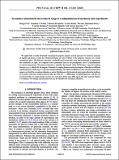Por favor, use este identificador para citar o enlazar a este item:
http://hdl.handle.net/10261/228780COMPARTIR / EXPORTAR:
 SHARE SHARE
 CORE
BASE CORE
BASE
|
|
| Visualizar otros formatos: MARC | Dublin Core | RDF | ORE | MODS | METS | DIDL | DATACITE | |

| Campo DC | Valor | Lengua/Idioma |
|---|---|---|
| dc.contributor.author | Cui B. | - |
| dc.contributor.author | Gebbia, J.F. | - |
| dc.contributor.author | Romanini, M. | - |
| dc.contributor.author | Rudic, S. | - |
| dc.contributor.author | Fernández-Perea, Ricardo | - |
| dc.contributor.author | Bermejo, Francisco Javier | - |
| dc.contributor.author | Tamarit, J.L. | - |
| dc.contributor.author | Zaccone, A. | - |
| dc.date.accessioned | 2021-02-05T20:10:04Z | - |
| dc.date.available | 2021-02-05T20:10:04Z | - |
| dc.date.issued | 2020-03-20 | - |
| dc.identifier | doi: 10.1103/PhysRevB.101.104202 | - |
| dc.identifier | issn: 2469-9969 | - |
| dc.identifier.citation | Physical Review B 101: 104202 (2020) | - |
| dc.identifier.uri | http://hdl.handle.net/10261/228780 | - |
| dc.description | 7 pags., 7 figs., 1 tab. | - |
| dc.description.abstract | We applied the recently developed Generalized Langevin equation (GLE) approach for dielectric response of liquids and glasses to link the vibrational density of states (VDOS) to the dielectric response of a model orientational glass. The dielectric functions calculated based on the GLE, with VDOS obtained in experiments and simulations as input, are compared with experimental data for the paradigmatic case of 2-Adamantanone at various temperatures. The memory function is related to the integral of the VDOS times a spectral coupling function γ(ωp), which tells the degree of dynamical coupling between molecular degrees of freedom at different eigenfrequencies. With respect to previous empirical fittings, the GLE-based fitting reveals a broader temperature range over which the secondary relaxation is active. Furthermore, the theoretical analysis provides clear evidence of secondary relaxation being localized within the THz (0.5-1 THz) range of eigenfrequencies, and thus not too far from the low-energy modes involved in α relaxation. In the same THz region, the same material displays a crowding of low-energy optical modes that may be related to the secondary relaxation. | - |
| dc.description.sponsorship | B.C. acknowledges the financial support of CSCCambridge Scholarship. J.L.T. acknowledges MINECO (No. FIS2017-82625-P) and the Catalan government (No. SGR2017-042) for financial support. | - |
| dc.language | eng | - |
| dc.publisher | American Physical Society | - |
| dc.relation | info:eu-repo/grantAgreement/MINECO/Plan Estatal de Investigación Científica y Técnica y de Innovación 2013-2016/FIS2017-82625-P | - |
| dc.relation.isversionof | Publisher's version | - |
| dc.rights | openAccess | - |
| dc.title | Secondary relaxation in the terahertz range in 2-Adamantanone from theory and experiments | - |
| dc.type | artículo | - |
| dc.identifier.doi | 10.1103/PhysRevB.101.104202 | - |
| dc.relation.publisherversion | http://dx.doi.org/10.1103/PhysRevB.101.104202 | - |
| dc.date.updated | 2021-02-05T20:10:05Z | - |
| dc.contributor.funder | Cambridge Commonwealth Trust | - |
| dc.contributor.funder | Ministerio de Economía y Competitividad (España) | - |
| dc.contributor.funder | Generalitat de Catalunya | - |
| dc.relation.csic | Sí | - |
| dc.identifier.funder | http://dx.doi.org/10.13039/501100002809 | es_ES |
| dc.identifier.funder | http://dx.doi.org/10.13039/501100003329 | es_ES |
| dc.identifier.funder | http://dx.doi.org/10.13039/501100003342 | es_ES |
| dc.type.coar | http://purl.org/coar/resource_type/c_6501 | es_ES |
| item.openairetype | artículo | - |
| item.grantfulltext | open | - |
| item.cerifentitytype | Publications | - |
| item.openairecristype | http://purl.org/coar/resource_type/c_18cf | - |
| item.fulltext | With Fulltext | - |
| Aparece en las colecciones: | (CFMAC-IEM) Artículos | |
Ficheros en este ítem:
| Fichero | Descripción | Tamaño | Formato | |
|---|---|---|---|---|
| Secondary relaxation.pdf | 1,55 MB | Adobe PDF |  Visualizar/Abrir |
CORE Recommender
Page view(s)
84
checked on 18-abr-2024
Download(s)
62
checked on 18-abr-2024
Google ScholarTM
Check
Altmetric
Altmetric
NOTA: Los ítems de Digital.CSIC están protegidos por copyright, con todos los derechos reservados, a menos que se indique lo contrario.
